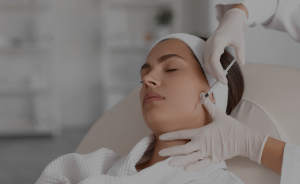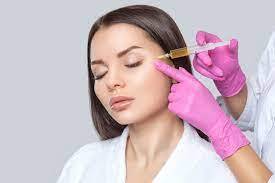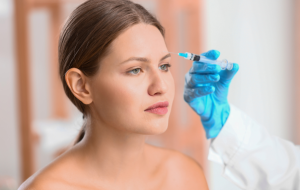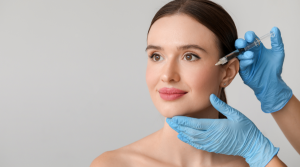As we age, wrinkles on the forehead are a common occurrence, leaving many feeling self-conscious and seeking a solution. Botox injections have become a popular solution for reducing the appearance of wrinkles on the forehead. However, determining the appropriate number of units of Botox for forehead treatments can be challenging, as it varies between individuals and depends on several factors.
In this section, we will provide a comprehensive understanding of the number of units of Botox required for forehead treatments. We will explore the factors that influence the dosage and provide expert guidance for optimal results.
Key Takeaways:
- The appropriate number of units of Botox for forehead treatments varies between individuals and depends on several factors.
- Factors that influence the necessary Botox dosage for forehead treatments include age, gender, muscle activity, and the severity of wrinkles.
- A consultation with a qualified professional is essential for determining the optimal amount of Botox units for forehead treatments.
- Maintaining natural-looking results with Botox treatments is crucial, and the right dosage can help maintain facial expressions while reducing wrinkles.
- Potential side effects and risks should be considered before undergoing the procedure.

What is Botox and How Does it Work?
Botox is a neurotoxin that is used in cosmetic treatments to reduce the appearance of wrinkles and fine lines on the forehead. It works by blocking the nerve signals that contract the muscles responsible for causing wrinkles, leaving the skin looking smoother and more youthful.
The treatment involves injecting small doses of Botox into specific muscles of the forehead using a very fine needle. The procedure is generally quick, with most treatments taking less than 30 minutes to complete.
While Botox is most commonly used for cosmetic purposes, it also has medical benefits and is used to treat various medical conditions such as migraines and excessive sweating.
Before undergoing Botox injections for the forehead, it’s important to ensure the treatment is administered by a qualified professional who has experience in the procedure. This will help to ensure the treatment is safe and effective, and that the desired results are achieved.
Benefits of Botox Injections for Forehead Rejuvenation
Botox injections provide a range of benefits for facial rejuvenation, including:
- Reducing the appearance of fine lines and wrinkles on the forehead.
- Smoothing out the skin for a more youthful appearance.
- Preventing new wrinkles from forming.
- Restoring confidence and self-esteem by improving the overall appearance.
Ultimately, Botox injections help to provide a more youthful and refreshed appearance and can enhance a person’s overall appearance and confidence.

The Role of Botox Dosage in Forehead Treatments
When it comes to Botox treatments for forehead wrinkles, the appropriate dosage is crucial for achieving optimal results. Determining the correct amount of Botox for each individual requires an understanding of various factors, including muscle strength and depth of wrinkles.
Generally, a higher dosage of Botox is required for individuals with stronger forehead muscles and deeper wrinkles. On the other hand, individuals with weaker forehead muscles or shallower wrinkles may require a lower dosage.
The forehead is divided into multiple areas, and the required dosage may differ for each specific area. For example, the glabella, or the area between the eyebrows, may require a higher dosage due to its stronger muscles.
It is important to note that Botox dosage for forehead treatments should always be determined by a qualified professional during a consultation. The specific dosage will depend on individual factors, such as age, gender, muscle activity, and the severity of wrinkles.
Underdosing of Botox can result in unsatisfactory results, while overdosing can cause unwanted side effects such as drooping of the eyebrows or eyelids. Therefore, it is crucial to consult with a qualified professional to determine the appropriate dosage for each individual.
It is also important to note that the effects of Botox are temporary, typically lasting between 3-4 months. Therefore, future treatments will be required to maintain the results. The frequency of treatments will depend on individual factors and the desired outcome.
In the next section, we will discuss the various factors that influence the number of Botox units required for forehead treatments.

Factors Influencing the Number of Botox Units Needed
When considering Botox treatment on the forehead, it is essential to understand the factors that can influence the number of Botox units needed for optimal results. These factors can vary from person to person and can affect the number of units needed to achieve the desired outcome.
Age: Age is a crucial factor in determining the number of units of Botox needed for forehead treatment. Individuals with more advanced age may require a higher dose to achieve the desired outcome.
Gender: Gender can also play a role in the number of units of Botox needed for forehead treatments. In general, women often require fewer units than men due to the differences in muscle structure.
Muscle activity: The strength and activity levels of the forehead muscles can impact the number of units required for treatment. Individuals with stronger muscles may require a higher dose to achieve optimal results.
Severity of wrinkles: The depth and severity of the wrinkles can also impact the number of units needed for treatment. Individuals with deeper and more pronounced wrinkles may require a higher dose to achieve the desired outcome.
In summary, several factors can influence the number of Botox units needed for forehead treatments, including age, gender, muscle activity, and the severity of wrinkles. By discussing these factors with a qualified professional and following a personalized treatment plan, individuals can achieve natural-looking results and maintain a rejuvenated forehead appearance.

Consultation and Customized Treatment Plans
When it comes to Botox treatment for forehead wrinkles, a personalized approach is key to achieving optimal results. Consulting with a qualified professional is essential in determining the specific amount of Botox needed for each individual. During a consultation, the healthcare provider will evaluate the patient’s medical history, examine the condition of the skin and discuss the desired outcome of the treatment.
The consultation also involves a careful assessment of the muscle activity in the forehead, which plays a critical role in determining the amount of Botox required. The dosage may vary depending on the strength of the muscle and the depth of the wrinkles. Therefore, a customized treatment plan is necessary to ensure the best possible results.
Based on the consultation, the healthcare provider will develop a personalized treatment plan that outlines the dosage, injection sites, and frequency of treatments. In some cases, a patient may require a combination of Botox and other treatments to achieve their desired results.
By following a personalized treatment plan, individuals can rest assured that they are receiving the ideal amount of Botox needed for their unique situation. This approach not only leads to better results but also reduces the risk of potential side effects.
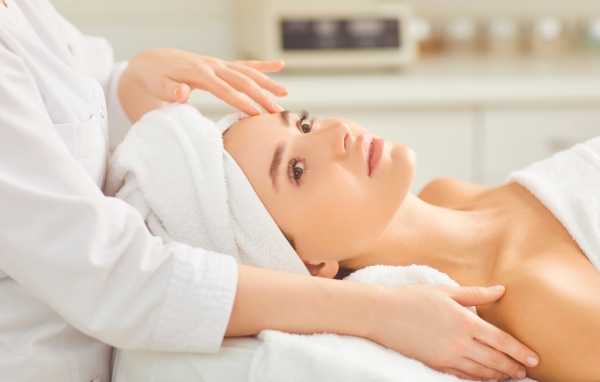
Recommended Botox Dosage Range for Forehead
When it comes to Botox treatments on the forehead, the number of units required varies depending on individual factors. These factors include the severity of wrinkles, muscle activity, and depth of wrinkles in the forehead area. As such, the recommended dosage range can range from 10 to 30 units.
For individuals with mild wrinkles, the recommended dosage is around 10 units. Those with moderate wrinkles may require 15-20 units, while individuals with severe wrinkles may need up to 30 units. Additionally, men generally require higher dosages than women due to stronger facial muscles.
It’s essential to note that a qualified professional should determine the optimal dosage for each individual. During a consultation, a professional will evaluate the area to be treated and customize a treatment plan that meets individual goals.
Avoid going overboard with the dosage; excessive usage of Botox, while not dangerous, may lead to an unnatural look and expressionless face.
It is crucial to prioritize safety and optimal results when considering Botox dosage for the forehead. By following personalized treatment plans and consulting with a qualified professional, individuals can achieve natural, rejuvenated results.

Achieving Natural-Looking Results with Botox
When considering a botox treatment for forehead wrinkles, many people are concerned about ending up with an unnaturally frozen look. However, with the right dosage and technique, it is possible to achieve natural-looking results.
The key to achieving natural-looking results is to use the appropriate forehead botox dosage. Too much botox can leave the forehead looking too smooth and expressionless, while too little may not provide the desired effect.
During the consultation, the qualified professional will assess the patient’s facial expressions and determine the correct amount of botox that will achieve the patient’s desired outcome while maintaining their natural look. The professional may also recommend additional treatments, such as dermal fillers, to complement the botox treatment and further enhance the natural-looking results.
It is also important to choose a qualified professional who is experienced in administering botox treatments for forehead wrinkles. A skilled practitioner will use the appropriate injection technique to ensure that the botox is distributed evenly, reducing the chances of over-treatment in one area.
In summary, achieving natural-looking results with botox requires the right dosage and technique administered by a qualified professional. By following these guidelines, individuals can enjoy a smoother, more youthful-looking forehead without sacrificing their natural expressions.
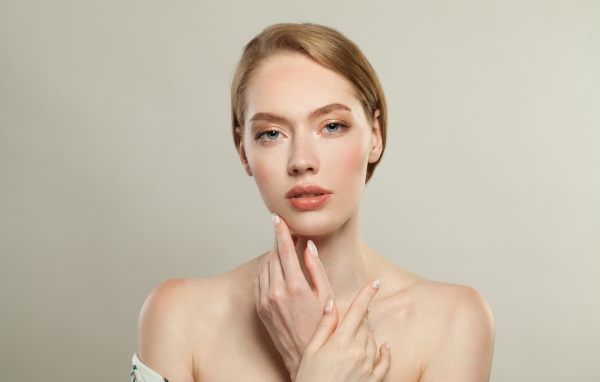
Botox Maintenance and Frequency of Treatments
Once you have undergone a Botox treatment for forehead wrinkles, it is essential to follow a maintenance plan to ensure the longevity of the results.
The frequency of Botox treatments for the forehead can vary from person to person. However, most individuals will require repeat treatments every three to six months to maintain the desired effect.
It is important to note that the frequency of treatments may increase or decrease depending on individual factors such as muscle activity and the severity of wrinkles.
Your medical practitioner will be able to advise you on the ideal maintenance plan and frequency of treatments for your individual needs.
To prevent the formation of new wrinkles, it is recommended to continue Botox treatments on a regular basis. Consistent treatments will help to sustain the effects of previous treatments, delaying the onset of new wrinkles.
It is also essential to avoid exposure to excessive heat, such as saunas or hot yoga, for the first 24 hours following a Botox treatment. This can help to ensure optimal results and reduce the risk of potential side effects.
By following a customized maintenance plan and attending regular appointments with your practitioner, you can enjoy the benefits of a smooth, rejuvenated forehead.

Potential Side Effects and Risks
While Botox is considered a safe and effective treatment for forehead wrinkles, there are potential side effects and risks that individuals should be aware of before undergoing the procedure.
Some of the most common side effects of Botox treatment for forehead include temporary bruising, swelling, and redness at the injection site. These effects typically subside within a few days to a week.
In rare cases, individuals may experience more severe side effects, such as drooping of the eyelids, double vision, or difficulty speaking or swallowing. These reactions usually occur when the injection is misplaced and can be minimized by seeking treatment from a qualified and experienced professional.
It is also important to note that the amount of Botox used for forehead treatment can affect the risk of side effects. While a higher dosage may produce more noticeable results, it also increases the potential risk of side effects.
Before undergoing Botox treatment for forehead, it is essential to discuss any health conditions, allergies, or medications with your provider. Some medications and medical conditions may increase the risk of complications and should be disclosed prior to the procedure.
Overall, Botox treatment for the forehead is a safe and effective way to rejuvenate the face and reduce the appearance of wrinkles. However, it is important to weigh the potential side effects and risks against the benefits of the treatment to ensure that it is the right choice for you.
Conclusion
When it comes to achieving a smoother, younger-looking forehead, understanding the number of units of Botox required is essential. By considering individual factors such as muscle strength, age, and gender, individuals can work with a qualified professional to determine the optimal dosage.
A personalized treatment plan will take into account the desired outcome and maintain facial expressions while reducing the appearance of wrinkles. By following the recommended dosage range, individuals can achieve natural-looking results and reduce the frequency of treatments needed.
It is important to be aware of the potential side effects and risks associated with Botox treatments, which can include headaches, bruising, and drooping eyelids. However, with proper consultation and guidance, individuals can confidently take steps towards a rejuvenated forehead.
In conclusion, consulting with a qualified professional and following personalized treatment plans based on individual needs and goals is crucial for achieving optimal results with Botox treatments. By considering the appropriate dosage, individuals can achieve natural-looking results and maintain a youthful appearance while minimizing the potential risks and side effects.
FAQ
How many units of Botox are typically required for forehead treatments?
The number of units of Botox required for forehead treatments can vary depending on individual factors such as muscle strength and depth of wrinkles. It is best to consult with a qualified professional who can assess your specific needs and provide personalized guidance.
What is Botox and how does it work as a treatment for forehead wrinkles?
Botox is a neurotoxin that temporarily paralyzes the muscles responsible for wrinkles. When used on the forehead, it can relax the muscles and reduce the appearance of forehead wrinkles.
How does Botox dosage play a role in forehead treatments?
The appropriate Botox dosage is crucial for achieving optimal results in forehead treatments. The dosage is determined based on factors such as muscle strength and the severity of wrinkles. It is important to work with a qualified professional who can determine the right dosage for you.
What factors influence the number of Botox units needed for forehead treatments?
The number of Botox units needed for forehead treatments can be influenced by factors such as age, gender, muscle activity, and the severity of wrinkles. A qualified professional will assess these factors to determine the optimal dosage for you.
Why is a consultation and customized treatment plan important for forehead Botox treatments?
A consultation with a qualified professional is important for forehead Botox treatments as it allows them to assess your individual needs and goals. A customized treatment plan can then be created to ensure you receive the optimal amount of Botox units for your desired outcome.
What is the recommended Botox dosage range for forehead treatments?
The recommended Botox dosage range for forehead treatments can vary based on the level of wrinkles and desired outcome. A qualified professional will be able to provide you with specific dosage recommendations based on your individual needs.
How can natural-looking results be achieved with Botox treatments for the forehead?
Natural-looking results can be achieved with Botox treatments for the forehead by ensuring the right dosage is used. By maintaining facial expressions while reducing the appearance of wrinkles, a balanced and natural result can be achieved.
How often should Botox treatments for forehead wrinkles be scheduled?
The frequency of Botox treatments for forehead wrinkles can vary depending on individual factors and desired results. It is best to consult with a qualified professional who can recommend an appropriate schedule for maintenance and to prevent the formation of new wrinkles.
What are the potential side effects and risks associated with Botox treatments on the forehead?
Potential side effects of Botox treatments on the forehead may include temporary bruising, swelling, or redness at the injection site. Rare risks can include allergic reactions or eyelid drooping. It is important to discuss any concerns with a qualified professional before undergoing the procedure.


